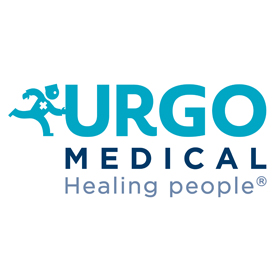Skin ulcers-microbiota-infected ulcers

Submitted: April 23, 2023
Accepted: October 16, 2023
Published: December 14, 2023
Accepted: October 16, 2023
Abstract Views: 182
PDF (Italiano): 135
PDF: 27
PDF: 27
Publisher's note
All claims expressed in this article are solely those of the authors and do not necessarily represent those of their affiliated organizations, or those of the publisher, the editors and the reviewers. Any product that may be evaluated in this article or claim that may be made by its manufacturer is not guaranteed or endorsed by the publisher.
All claims expressed in this article are solely those of the authors and do not necessarily represent those of their affiliated organizations, or those of the publisher, the editors and the reviewers. Any product that may be evaluated in this article or claim that may be made by its manufacturer is not guaranteed or endorsed by the publisher.
Similar Articles
- Fabrizio Moffa, Alberico Balbiano da Colcavagno, Elia Ricci, Use of adipose tissue stem cells in chronic skin lesions: clinical experience , Italian Journal of Wound Care: Vol. 2 No. 2 (2018)
- Romina Corgiat-Loia, Lucia Pavignano, Marcella Vargiu, Laura Perono Minino, Giovanna Capace, Fabrizia Cogo, Lucia Carlino, Chiara Mangolini, Marzia Soave, Eraldo Personettaz, Enrica Bertotti, Fabrizio Aprà , Carla Varola, Cristina Amato, Eleonora Aloi, Looking beyond...a path started in ASL TO4 for the treatment of chronic skin lesions , Italian Journal of Wound Care: Vol. 2 No. 2 (2018)
- Alberto Garavello, Orazio Caudullo, Paola Fiamma, Enrico Oliva, Ginevra Oliva, Relational and psychological problems in venous ulcer therapy: questions and answers , Italian Journal of Wound Care: Vol. 8 No. 1 (2024)
- Giulia Casadei, Costanza Santini, Giovanni Calbucci, Insertion of the podiatrist and implementation of the diagnostic and therapeutic care path for the diabetic foot in the area of Cesena , Italian Journal of Wound Care: Vol. 2 No. 3 (2018)
- Fiorella Riservati, Negative pressure therapy: costs and benefits , Italian Journal of Wound Care: Vol. 2 No. 3 (2018)
- Federica Buzzi, Hevan Adel Al-Atroushy, Nizar Bakir Yahya, Hozan Dilneya Rwanduzi, Stefano Maindi, Is it possible to use a 100% Medical Grade Honey in the premature babies? , Italian Journal of Wound Care: Vol. 5 No. 2 (2021)
- Elisa Marinelli, Sara Sandroni, Eleonora Salutini, Use of ROS-releasing dressing in the management of postexposure reflected sunlight injury on complex post-extraction mirror , Italian Journal of Wound Care: Vol. 8 No. 2 (2024)
- Giovanni Petracca, Francesco Zappia, Giuseppe Maccarone , Necrotizing fasciitis: A case report and a review of the literature , Italian Journal of Wound Care: Vol. 5 No. 2 (2021)
- Katia Feliziani, Arianna Dichiara, Giovanna Faccenda, Marco Romanelli, Battistino Paggi, Empowerment and patient-centered care: A therapeutic educational project for patient with venous ulcers. A pilot study , Italian Journal of Wound Care: Vol. 5 No. 1 (2021)
- Aurora Parodi, Valeria Maria Messina, Manuela Martolini, Shpresa Haxhiaj, Emanuele Claudio Cozzani, Update on the management and treatment of patients with chronic skin lesions , Italian Journal of Wound Care: Vol. 5 No. 2 (2021)
You may also start an advanced similarity search for this article.



 https://doi.org/10.4081/ijwc.2023.98
https://doi.org/10.4081/ijwc.2023.98






